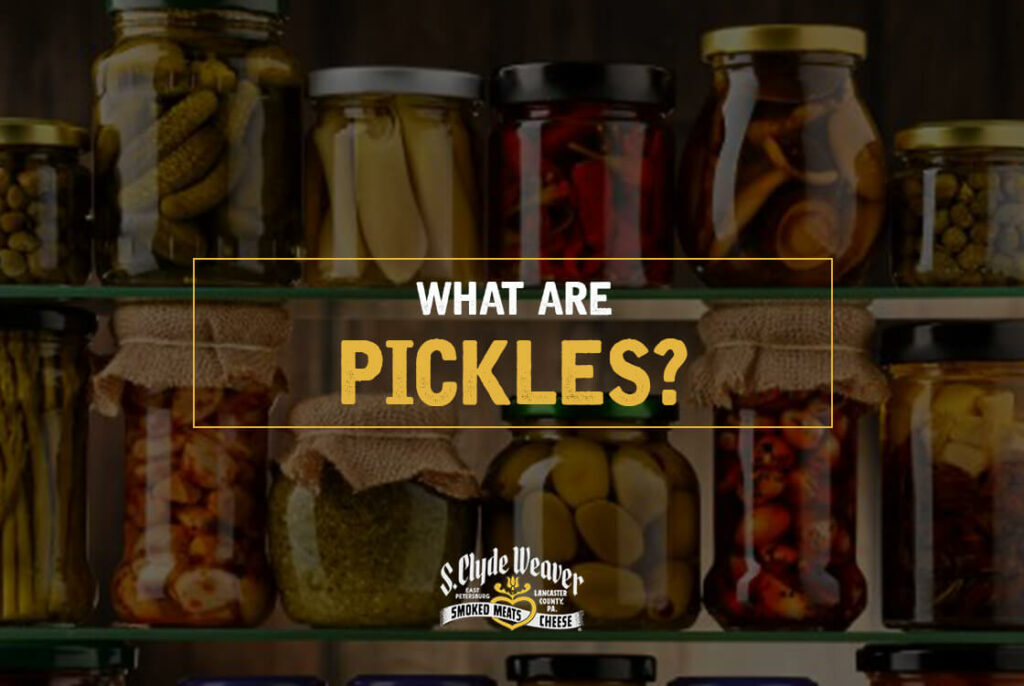
You may recognize pickles as the juicy, crunchy spears you enjoy at family cookouts and picnics. However, pickles are so much more than that. Pickles can enhance meals, appetizers, sandwiches and side dishes. They can be sweet, sour or spicy, and they come in various flavors, sizes and colors.
A pickle’s flavor depends on the ingredients it soaks in, so some pickles have unique flavors. No matter what kind of pickle you prefer, there are endless possibilities for what you can do with pickles. Pickles have an interesting history that dates back to ancient times, and their local history in Lancaster, Pennsylvania, carries on today with beloved Pennsylvania Dutch traditions.
What Are Pickles?
What most Americans simply call pickles are pickled cucumbers. Most people recognize pickles as the deliciously sweet and sour green food we eat with our sandwiches, on top of burgers or as a tasty snack. However, many don’t realize that pickles are made from cucumbers and that other vegetables, fruits and other foods can also be pickled.
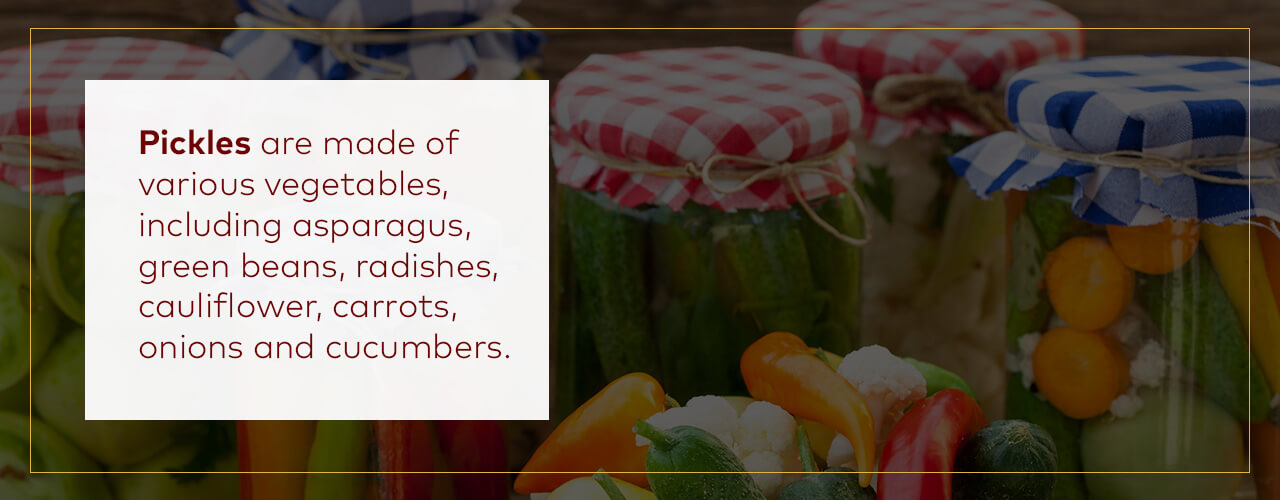
What Are Pickles Made Out Of?
Pickles are made of various vegetables, including asparagus, green beans, radishes, cauliflower, carrots, onions and cucumbers. Even sauerkraut is a type of pickled vegetable because it is made from fermented cabbage. You can also pickle other food types, such as eggs. Most pickles are vegetables pickled in vinegar, brine or other solutions, but the most common type of pickled vegetable in the United States is the cucumber.
Health Benefits of Pickles
Pickles are tasty, and they can also offer some health benefits. Pickles are low in fat, and some types of pickles contain high vitamin concentrations. A dill pickle typically contains the following vitamins:
- Vitamin K: Pickles contain about 20% of this vitamin’s recommended daily amount. It helps blood clot and supports bone strength.
- Potassium: Pickles contain approximately 6% of the recommended daily amount of potassium, which supports nerve function.
- Calcium: Calcium supports strong bones and teeth, and pickles provide about 6% of the recommended daily amount.
- Vitamin A: Pickles contain about 1% of the recommended daily amount of this vitamin, which supports vision and the immune system.
- Vitamin C: Vitamin C is an antioxidant, and pickles provide about 3% to 4% of the recommended daily amount.
Other pickled vegetables such as peppers and carrots can contain other vitamins and nutrients. Some vegetables contain a higher vitamin concentration due to the pickling process, so you may benefit from more vitamins in pickled vegetables than you would from non-pickled vegetables.
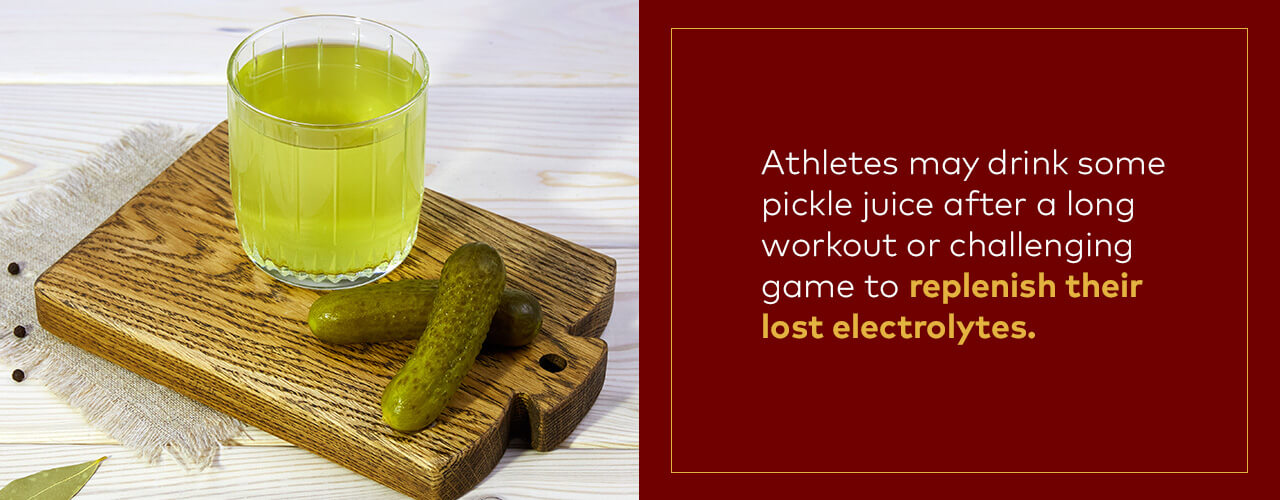
Pickles can also be high in sodium if they are pickled in saltwater. While it’s best to avoid consuming too much sodium, some people drink pickle juice to balance electrolytes and ease muscle cramps. Athletes may drink some pickle juice after a long workout or challenging game to replenish their lost electrolytes.
Some pickles are fermented, which means that they sit in saltwater as healthy bacteria known as probiotics break down their natural sugars. Probiotics can offer several health benefits, including the following:
- Lower cholesterol
- Lower blood pressure
- Improved digestion
- Immune system support
- Healthy weight management
Fermented foods can also help with inflammation and insulin resistance.
Unfermented pickles can also be healthy due to the health benefits of cucumbers and other vegetables, vinegar and spices. Vinegar has antimicrobial properties, and it can help to reduce cholesterol, manage weight and control blood sugar.
Because they are made from vegetables, pickles provide antioxidants. Cucumbers contain natural antioxidants, which fight harmful free radicals and help prevent health conditions such as cancer and heart disease. Eating pickles can provide the body with healthy antioxidants.
The next time you want to enjoy a snack, consider all of the health benefits that crunchy, tangy pickles have to offer. They are a delicious, low-fat alternative to many unhealthy snacks, but they taste just as great.
How Are Pickles Made?
People today have the convenience of purchasing pickles in a jar and don’t have to worry about preserving their own food as their ancestors did in years past. However, the sweet and tangy taste of pickled vegetables makes them a popular food regardless. The process of how pickles are made is quite fascinating. Some people love it so much that they pickle their own vegetables at home.
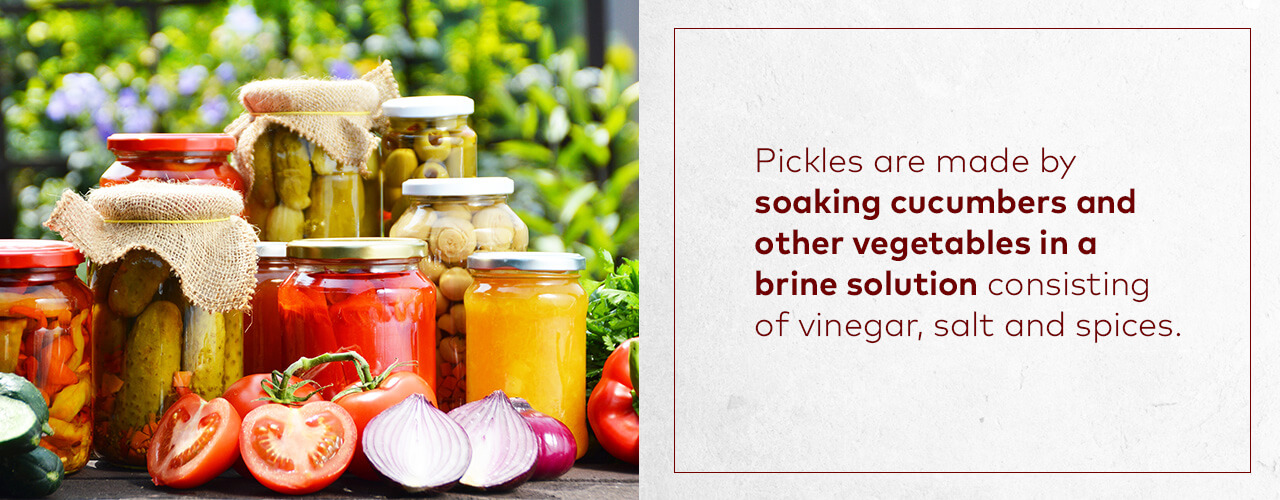
Pickles are made by soaking cucumbers and other vegetables in a brine solution consisting of vinegar, salt and spices. Vinegar helps preserve pickles, and it contributes to the pickles’ slightly sour taste. Sugars or other sweeteners can add a sweet taste to pickles while ingredients such as dill weed, cinnamon, allspice, cloves, garlic and black pepper can create other unique flavors.
Store-bought pickle juice also contains other ingredients such as stabilizers, colorants and preservatives to maintain consistency and lengthen shelf life. Throughout history, pickles were soaked in a brine solution inside barrels, but today the process takes place using advanced machinery. Vegetables are boiled and rinsed to remove bacteria, and then they are placed in jars with different brine solutions to create different pickle flavors.
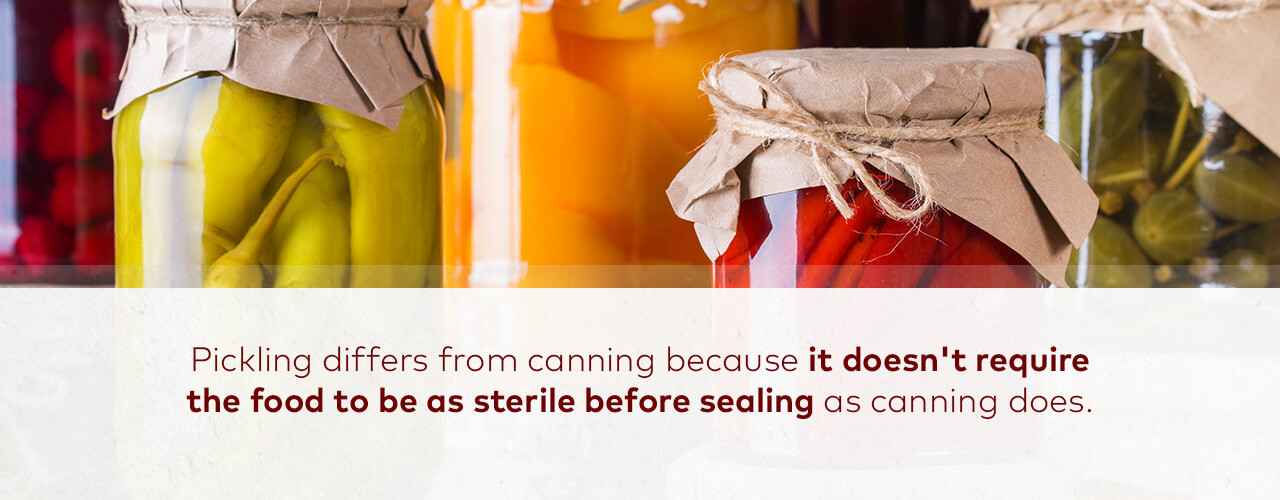
Pickling differs from canning because it doesn’t require the food to be as sterile before sealing as canning does. The vinegar or brine kills harmful microorganisms and bacteria to keep food safe. Fermentation pickling works a little differently, though. Fermentation relies on natural bacteria that inhibit the growth of harmful microbes when deprived of air. The natural bacteria in food convert its sugars and carbohydrates into acid that works to preserve it.
The History of Pickling
The history of pickling is quite interesting. Today, many people enjoy jars of delicious pickles simply because they like the taste. We enjoy pickles at picnics, parties, family gatherings, dinners and at home when we crave a crunchy snack. However, pickling has been around for thousands of years, and its original purpose was for food preservation and survival.
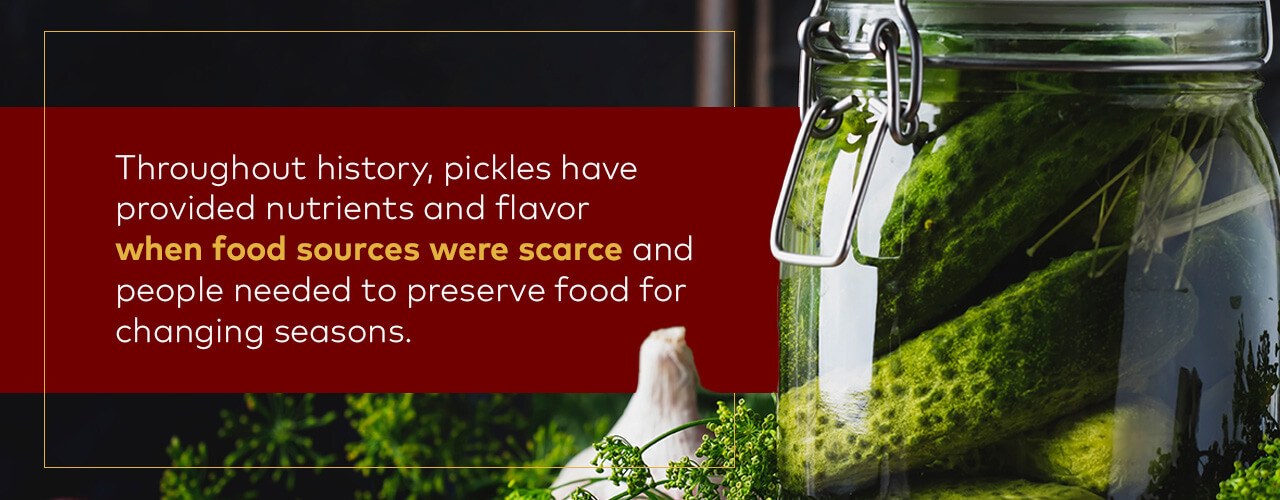
Pickling was a necessary food preservation strategy during ancient times, and pickles became an important food staple during the Age of Exploration. Throughout history, pickles have provided nutrients and flavor when food sources were scarce and people needed to preserve food for changing seasons.
Pickling in Ancient Times
Pickling history dates back more than 4,000 years. Archaeologists believe that Mesopotamians started pickling in 2400 B.C. when they discovered that they could soak cucumbers in acidic brine to preserve them. Throughout history, pickling has been a method to preserve out-of-season food.
Cleopatra, the Queen of Egypt, believed that pickles contributed to her beauty and health, and the Roman Empire believed that pickles would make their troops strong. In A.D. 900, dill arrived in Western Europe from Sumatra, giving Western Europeans a new herb to soak their pickles in.
Pickles in America
Pickles got their start in America thanks to Christopher Columbus, who traveled with them because they helped prevent scurvy and lasted long enough to sustain long journeys. Scurvy was a life-threatening disease caused by a vitamin C deficiency, and pickles provided enough vitamin C to prevent sailors from developing scurvy on long journeys. By 1659, Dutch farmers began growing cucumbers, pickling them and selling them on the street in what is now Brooklyn, New York.
Jewish families living in Poland, Ukraine, Russia and Lithuania used pickles as a dietary staple because their flavor balanced out the bland diet of bread and potatoes that people relied on. People in these colder countries would fill barrels with beets, cucumbers and shredded cabbage to ferment for many weeks in a warm place. They would then move them to cool cellars over the winter until they could grow fresh produce in the spring.
Eastern European Jewish immigrants introduced kosher dill pickles to the United States during the late 19th and early 20th centuries. They would wash cucumbers and place them in barrels with garlic, dill, spices, water and kosher salt, and they would allow them to ferment for a few weeks to many months.
New York City’s Jewish community then began selling pickles on pushcarts in the city’s immigrant neighborhoods. As pickling became a profitable business for the Jewish community, they eventually began to sell pickles straight from the barrels in their own shops.
Pickles in Lancaster, Pennsylvania
Lancaster, Pennsylvania, is known for its traditional Pennsylvania Dutch cuisine that comes from the traditions that German immigrants brought with them to the region. These culinary traditions remain popular today, and many people visit Lancaster County to taste the delicious Pennsylvania Dutch flavors.
German immigrants referred to as the Pennsylvania Dutch were the first settlers in Lancaster, Pennsylvania. They arrived in 1709, and their fondness for fermented foods such as pickled vegetables influenced the sweet and sour pickled relish known as “chow chow.” Many people grew and preserved their own vegetables during the Great Depression, and pickled relish often consisted of the leftovers or end-of-season vegetables.
Today, Lancaster’s unique chow chow contains cauliflower, string beans, lima beans, carrots, sweet corn, kidney beans, celery and onions. The vegetables are pickled in vinegar, sugar, celery seed and turmeric for a unique Pennsylvania Dutch flavor.
Pickles were such an important part of German culture that the Pennsylvania Dutch families in Lancaster carried on the German tradition of hiding pickle ornaments in the branches of their Christmas trees. Parents would give an extra gift to whichever child found the pickle first, and any adult who found the pickle first was believed to gain good luck for the year. Some Pennsylvania families continue to practice this fun tradition.
Pickled cabbage, also known as sauerkraut, is another Pennsylvania Dutch tradition that many still practice today. Many people believe eating pork and sauerkraut on New Year’s Day will bring fortune and good luck for the upcoming year. Many families share this traditional holiday meal to celebrate each new year.
Food Preservation Advancements
Food preservation advanced in the 1850s when James Young, a Scottish chemist, patented paraffin wax as a way to better seal jars and preserve food. In 1858, John Mason advanced food preservation even further when he patented the Mason jar.
Since the Mason jar’s heavyweight glass can withstand the canning process’s high temperatures, it made the preservation process easier. Both the Mason jar and the use of paraffin wax made home pickling a much easier process.
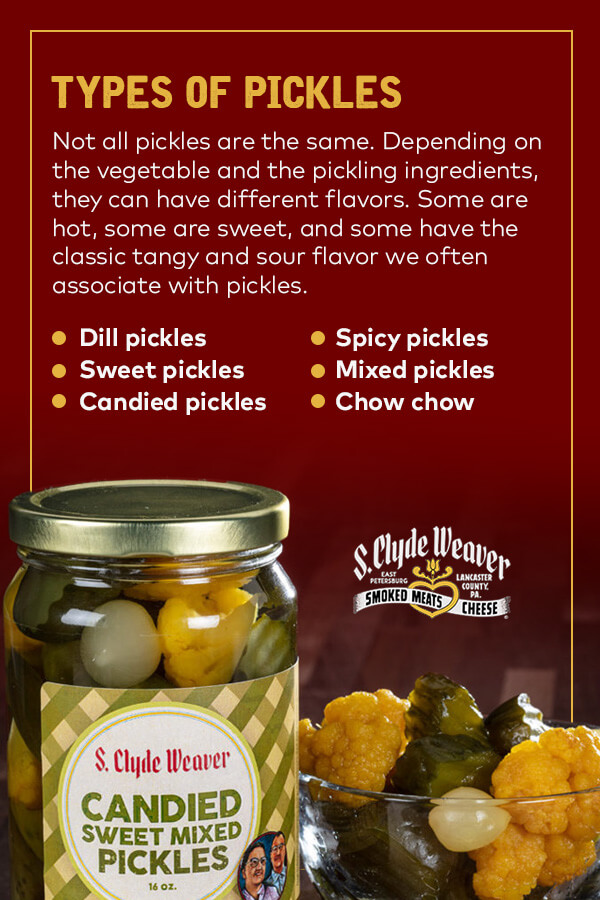
Types of Pickles
Not all pickles are the same. Depending on the vegetable and the pickling ingredients, they can have different flavors. Some are hot, some are sweet, and some have the classic tangy and sour flavor we often associate with pickles.
- Dill pickles: Dill pickles are classic tangy cucumber pickles soaked in brine with dill and garlic.
- Sweet pickles: Sweet or bread and butter pickles are cucumbers soaked in brine, sugar and spices for a sweet and tangy taste.
- Candied pickles: Candied pickles are soaked in an extra-sweet brine.
- Spicy pickles: Some pickles are soaked in spicy ingredients for a hot and spicy flavor. Pickled peppers also have a spicy taste.
- Mixed pickles: Mixed pickles are often a combination of pickled cucumbers and other pickled vegetables such as cauliflower, peppers and onions.
- Chow chow: Chow chow is a mixture of pickled vegetables with a recipe that follows Pennsylvania Dutch tradition.
What Are Pickles Good For?
Nothing beats the tangy taste of a cold, crunchy pickle on a hot summer day. A family picnic or cookout with friends just isn’t complete without some delicious dill pickle spears. Of course, this is not the only way to enjoy pickles. While they are tasty snacks on their own, they can also be used to enhance other snacks and meals. Here are some of the best uses of pickles:
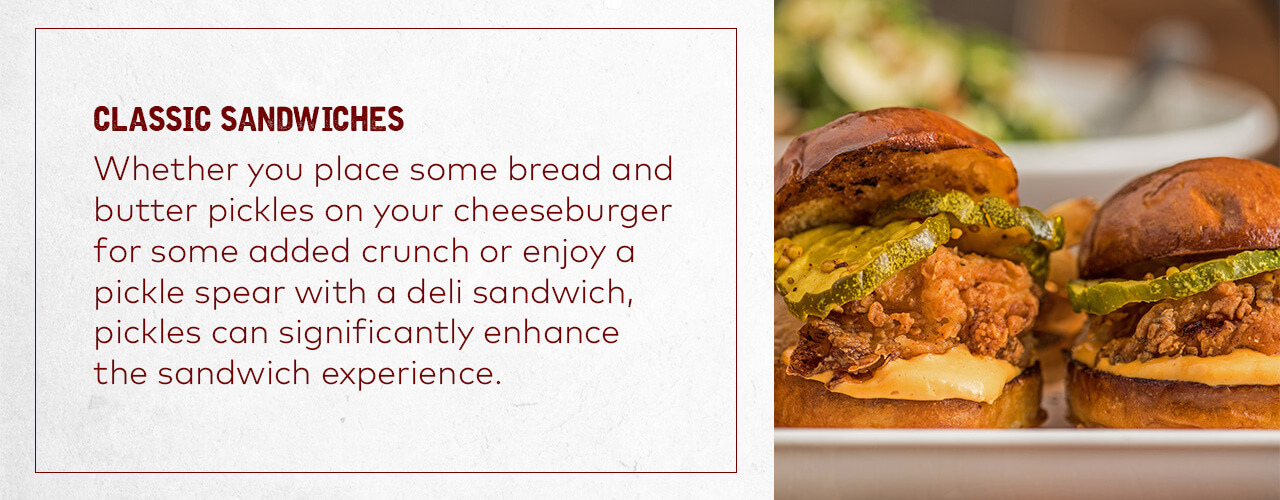
Classic Sandwiches
Pickles are great additions to sandwiches. Whether you place some bread and butter pickles on your cheeseburger for some added crunch or enjoy a pickle spear with a deli sandwich, pickles can significantly enhance the sandwich experience.
Place some bread and butter pickles in your next grilled cheese for an added flavor or use them to create a creative panini with bacon and chicken. Add them to a club sandwich stacked with your favorite savory meats and cheeses. Pickles add just the right amount of zest and crunch to any type of sandwich.
Delightful Appetizers
Try incorporating more pickles into your next party or family gathering. Dip them in batter and fry them for crispy fried pickles or place them in tortillas with cream cheese and your favorite deli meat to make pickle roll-ups. Wrap some dill pickle spears with cream cheese and bacon and bake them to create a unique snack. You can also add some small pickles and pickled olives to a charcuterie board to enhance the look and taste of this popular party favorite.
Pickles also taste great in flavorful dips. Mix some dill pickles with cream cheese, sour cream and dill weed for a zesty dill pickle dip or chop some sweet pickles up and add them to a creamy cheeseburger dip. You can even add pickles to salsa. Simply combine them with crushed tomatoes, chopped onions, cilantro, red pepper flakes, chili powder and any other ingredients you like to add to your salsa.
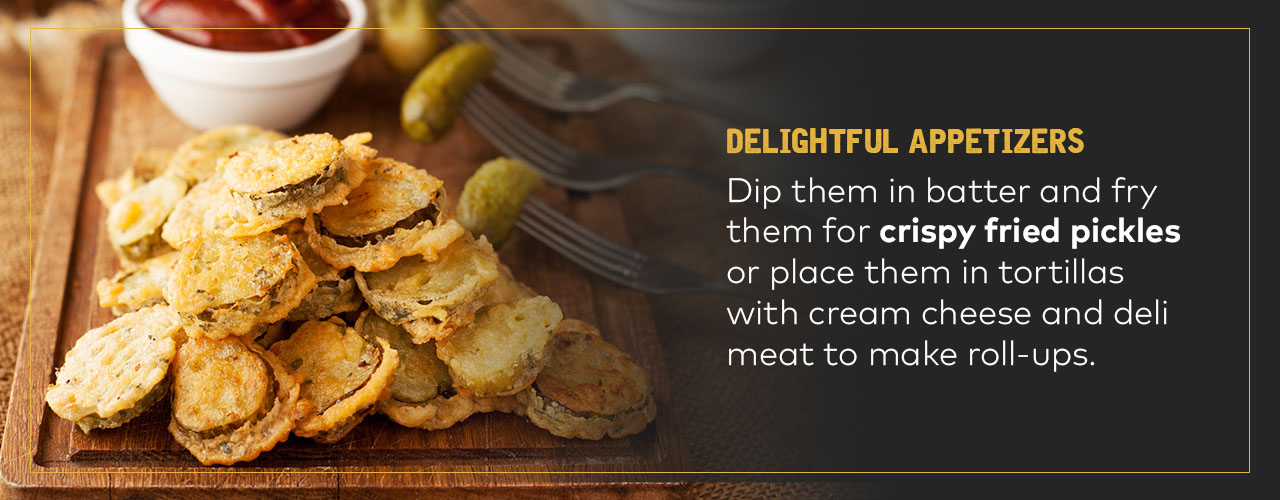
Zesty Side Dishes
Classic Pennsylvania Dutch chow chow and pickled relish make for tangy side dishes to serve with any meal. Bring it to your next cookout, or use it to garnish a fresh salad. You can even add it to pasta salad, chicken salad, macaroni salad or egg salad to add a little zest.
Add some pickle pieces to a skewer with your favorite meat and vegetables for a fun kabob at your next cookout. You can even add some chopped pickles to macaroni and cheese for a fun twist on a favorite classic.
Tasty Meals
Consider adding pickles to your next dinner. Marinate chicken breasts in pickle juice, pan-sear it and place sliced pickles on top for a unique meal. Add pickled relish or Pennsylvania Dutch chow chow to your breakfast and create a delicious omelet, or throw some pickled vegetables in the slow cooker with a roast to enhance its flavor.
If you’re hungry for a scrumptious cheeseburger but want something a little healthier, consider making a cheeseburger salad topped with sweet bread and butter pickles. Combine your favorite type of leafy greens with some ground beef, cheese and tomatoes and top it off with some crunchy pickles for a tasty salad.
If you enjoy stuffed peppers, try making some stuffed pickles for a fun dinner. Simply allow the juice to drain out of dill pickle ends and fill them with cream cheese, onion and seasonings before refrigerating and serving them.
Delicious Drinks
Many athletes drink pickle juice to replace electrolytes after a long workout or an intense game. You can also use pickle juice to make a tasty drink. Combine it with tomato juice and vodka to make a delicious Bloody Mary cocktail or mix it with vodka and ice to create a pickle martini.
Experience True Lancaster County Flavors With S. Clyde Weaver’s Pickles
The satisfying crunch and delicious flavors of pickles bring back a sense of nostalgia for many people. Whether you enjoyed crunchy pickle spears at family cookouts as a child or helped your grandma pick vegetables from the garden to create delicious chow chow, pickles can bring back fond memories of growing up in Pennsylvania.
Pickles can even bring back fond memories for people who grew up outside of Pennsylvania due to how popular Pennsylvania Dutch cuisine has become over the years. S. Clyde Weaver has been making delicious pickles for over 100 years, and our pickles are just as authentic to Lancaster County traditions as they were when we originally opened. Times may change as years go by, but our recipes remain the same.
Whether you’re looking for sweet pickles, kosher dill pickles, candied pickles, hot pickles, mixed pickles or tasty chow chow, you will find traditional Lancaster flavors in all of S. Clyde Weaver’s pickle products. Bring some sweet bread and butter pickles to your next cookout or enjoy some crisp kosher dill pickles. Try some Sweet Heat mixed pickles if you’re looking for a spicy flavor or some candied sweet mixed pickles for a delightful sweet and sour taste.
Our traditional chow chow is unique to Lancaster and perfect for any time of the year. With a delicious blend of cauliflower, string beans, sweet corn, lima beans, celery, carrots, kidney beans and onions soaked in sugar and vinegar blend, chow chow makes a fantastic side dish the whole family will love.
Enjoy Traditional Lancaster Pickles at Home
Pickles are delicious snacks that can enhance almost any dish. From burgers on the grill to fancy charcuterie boards, pickles are a delicious addition to any meal or appetizer. With sweet bread and butter pickles, hot and spicy pickles and tangy dill pickles, there is a pickle flavor for everyone to love.
While many people enjoy the pickling process, you can relax and enjoy Lancaster’s traditional pickles without any hassle. Let S. Clyde Weaver handle the pickling process while you enjoy adding juicy pickles to sandwiches, meals, appetizers and snacks.
Experience the traditional flavors of Pennsylvania Dutch pickles with S. Clyde Weaver’s products. We will deliver Lancaster County deliciousness to your home so you can enjoy Pennsylvania’s traditions with your family. Order some S. Clyde Weaver pickles to taste the Pennsylvania Dutch tradition today.
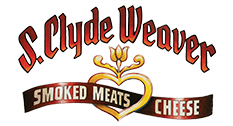



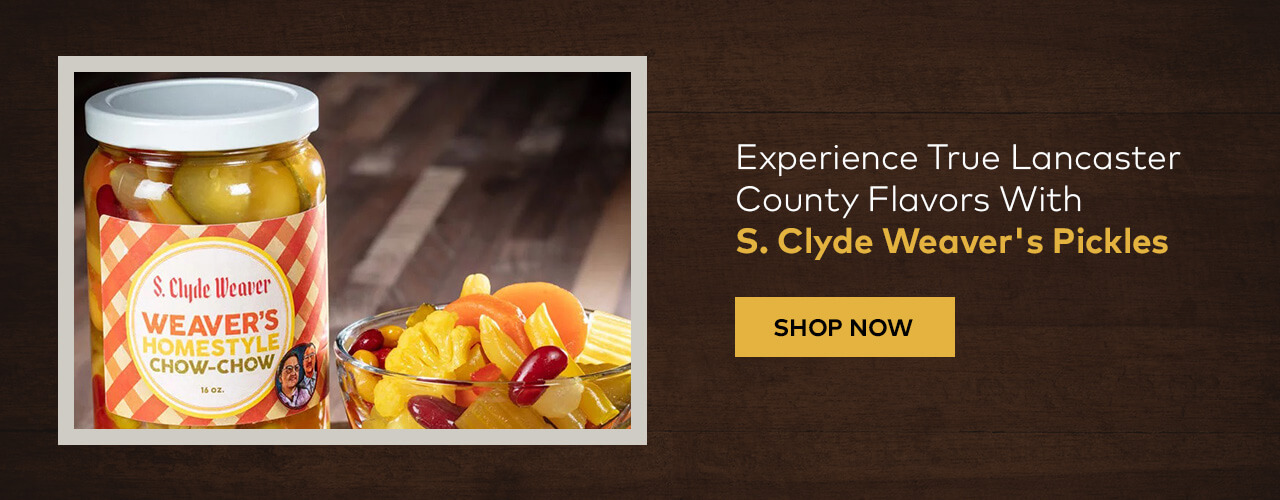

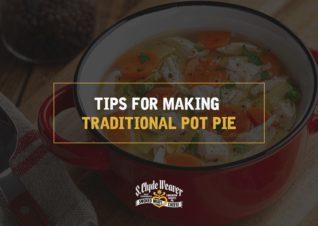
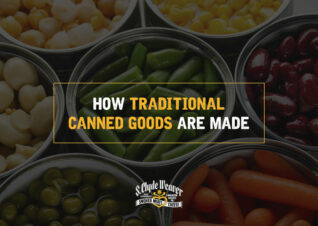



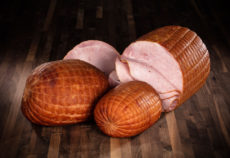
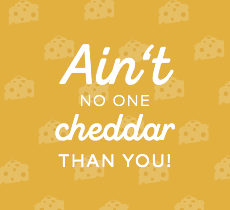
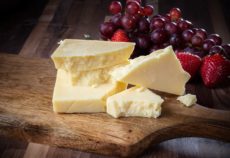
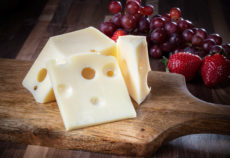
We love pickle juice..Would like to purchase some.